Content refreshing is one of the best strategies to keep your marketing efforts sustainable and to ensure that your site maintains its ranking in search engines.
Here’s everything you need to know about it, from finding content to updating and the best way to do it.
Contents:
What Is Content Refreshing?
Content refreshing is the process of taking old content and updating it to make it relevant and fresh again.
This can involve adding new information, removing outdated data, changing the format, or anything else that will make it more useful and engaging for your audience.
Most people think that the only way to be successful in online marketing is to keep producing high-quality, original content. While this is certainly one way to succeed, it’s not the only way.
You can get a lot of mileage out of repurposing and refreshing old content.
Consider the following example.
Look at how the interest in the topic “photoshop” has been declining, while their competitor “canva” has been rising in the last years:
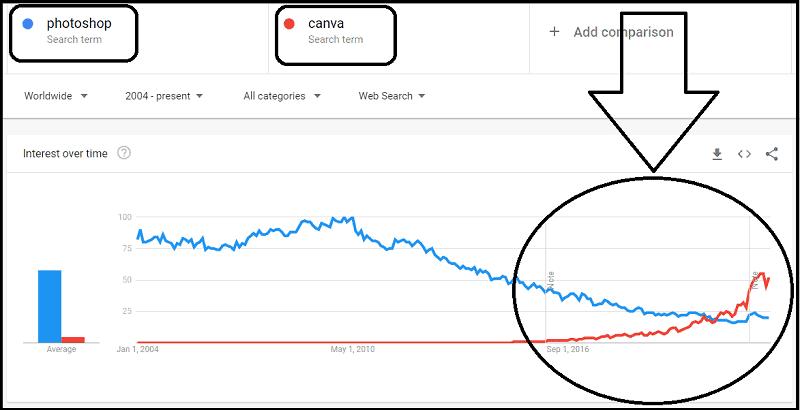
Content decays over time as new information and trends arise.
Specifically, if you don’t update your old articles, they will have a high chance of becoming irrelevant and losing their impact.

Why Is Content Refreshing Important?
There are a few reasons why content refreshing is important:
- It helps you save time and energy
- It keeps your content relevant
- It helps you rank higher in search engines
- It drives more traffic to your site
It Helps You Save Time and Energy
If you’re constantly starting from scratch and creating new content, it’s going to take a lot of time, money, and energy.
By refreshing old content, you can save yourself a lot of time and effort.
It Keeps Your Content Relevant
As I mentioned before, content decays over time as new information arises.
When updating your old posts, you can ensure that they are always relevant.

It Helps You Rank Better in Search Engines
The main goal of SEO is to get your site to rank higher in search engines.
One way to do this is by publishing new, relevant content.

Not only that, but you’re also increasing the chances that people will click through to your site when they see your content in the search results.
It Drives More Traffic to Your Site
In a research made by HubSpot, they found out that updating old blog posts increased traffic to old posts by 106%.

You can share it on social media, send it out in your newsletter, and re-post it on your blog.
By doing this, you’re driving more traffic back to your site, which can lead to more leads and sales.
What is Content Decay?
With the Freshness content update introduced by Google in 2011, content decay became a real concern for website owners and marketers.
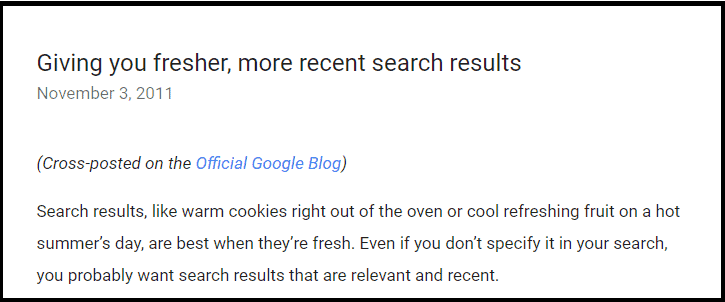
So, what does it mean for you?
It means that your content becomes outdated and may lose its online visibility.
This can happen for several reasons, such as new information becoming available or changes in search algorithms (or competitors outranking you).

- Spike. Here your content is first published and it begins to gain traction. It’s during this phase that it is most likely to rank high in search engines.
- Trough. Your content starts to lose its ranking. It usually occurs a few months after it has been published.
- Growth. You start to see your content regain its ranking. It usually happens when you refresh or update it.
- Plateau. Here your content stabilizes and remains at a consistent ranking.
- Decay. This is the final phase where your content continues to lose its ranking and becomes outdated.

Content Refreshing Phases
John Mueller from Google pointed out that content refreshing is one of the options to deal with old content issues.

So, here are four phases you need to take into consideration when updating your old content:
Let’s take a closer look at each phase.
Identify Content to Refresh
In this first step, there are a few factors you should take into consideration:
- Age of the Content
- Engagement Metrics
- Traffic Numbers
- Search Ranking
- Your Marketing Goals
Age of the Content
One of the main factors you should take into consideration is the age of your content.

This is because information changes quickly and what was relevant in the past might be changed today.
Engagement Metrics
Another factor to consider is engagement metrics. These include things like the number of social shares, comments, and email subscribers you have.
If your content has low engagement, it might be a sign that it’s outdated or no longer relevant to your audience.
Traffic Numbers
The third factor is traffic numbers. If you’ve noticed a decline in traffic to a particular piece of content, it might be a sign that it needs to be reviewed.

Search Ranking
Finally, you should also take into consideration your content’s search ranking.
If your content is no longer appearing in the search results (or steadily losing its positions in SERPs), it probably needs to be refreshed.
Your Marketing Goals
In addition to the above factors, you should also consider your marketing goals.
For example, if your target is to increase brand awareness, you might want to work on your old content more often than if your goal is to generate leads.
If you have a post that has been converting well on your marketing funnel, then, by all means, update it more frequently in comparison to an article that’s not bringing you any results.
Practical Steps to Identify Content to Refresh
If you have a lot of pages on your site, it might seem like a daunting task to go through all of them and determine which pieces need to be updated.
According to research published on Ahrefs, you should update posts with more than 20,000 monthly visitors at peak performance.
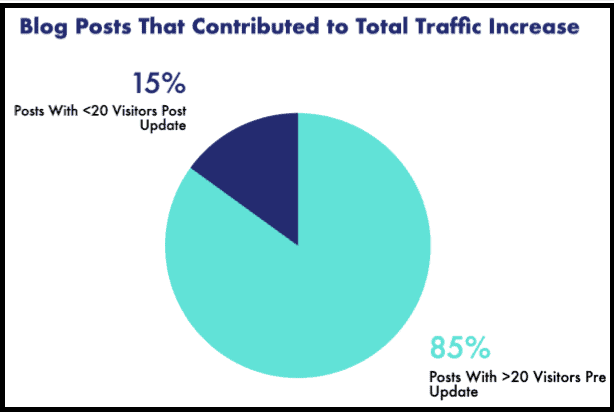

You can also take a look at the engagement metrics, such as the bounce rate and time on the page, to see which pieces of content are performing well and which ones need to be improved.
Another way is to use Google Search Console.
You can use the “performance” feature to see which pieces of content are getting the most impressions and clicks.
Go to “pages”, select one of the pages on the list, and check how the post has been doing in a specific date range (I’d say, at least, two years):
You can also use this information to determine which keywords you need to target:

Finally, you can also use Google Trends to see if there is a decline in searches for a particular keyword or topic.
Once you’ve identified which pieces of content need to be refreshed, it’s time to move on to the next step: updating the content.
Update the Content
There are a few things you should keep in mind when updating your articles:
- Make sure the information is still relevant and accurate
- Update the examples and case studies
- Add new images, videos, or infographics
- Add new statistics and data
- Research new ideas to include
- Update the formatting and structure
- Include new keywords and phrases
- Optimize for voice search
- Fulfill search intent
Update the Information
The first thing you need to do when updating your content is to make sure the information is still relevant and accurate.

If it’s not, you need to update it accordingly.
You should also check for any broken links in your content and update them as well.

Update the Examples and Case Studies
If you have any outdated data, you need to replace them with new research, examples, or case studies.
This will make your content more relatable and helpful for your readers.
Add New Images, Videos, or Infographics
In addition to the previous suggestions, you should also add optimized images, videos, or infographics.
This will help to break up the text and make your content more visually appealing.
It will also help to keep your readers engaged with your content.
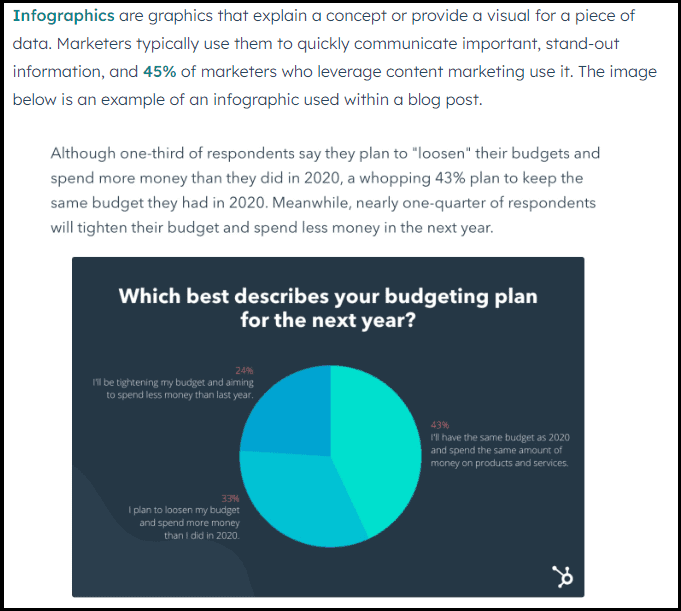
Add New Statistics and Data
Adding new statistics and data may help your content become interesting and digestible.
It will also show your readers that you are keeping up with the latest trends.
Update the Formatting and Structure
Doing this will help to make your content easier to read and more user-friendly.
It will also help search engines to better understand it.

Include New Keywords and Phrases
Target new keywords and phrases. For example, semantically related keywords.
This will help both users and search engines better understand your content (don’t overoptimize).

Optimize for Voice Search
With the rise of digital assistants like Siri and Alexa, more and more people are using voice search to find information online.
To do this, you need to use natural language and long-tail keywords.
You should also include question-and-answer formats in your content.
Fulfill Search Intent
Fulfilling the search intent means to match the user’s query.

- “Why is my post not ranking well in the SERP?”
- “What does this query want to know?”
- “Is the post format correct for this query?”
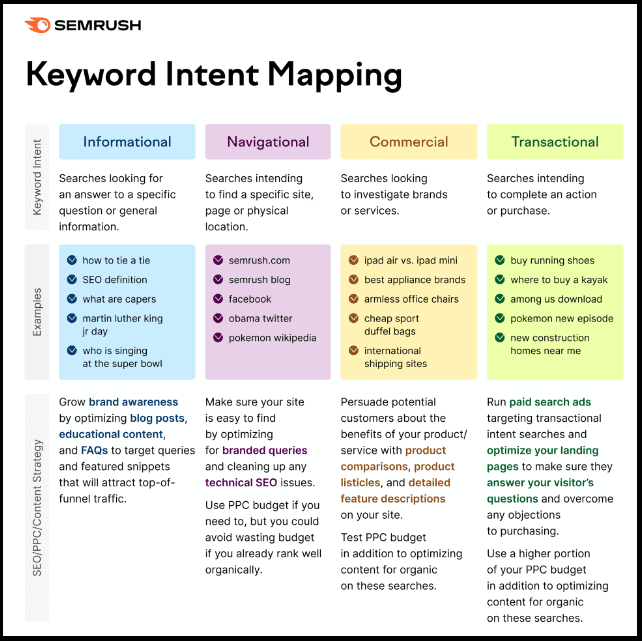
Promote the Refreshed Content
Now, the fun part!
There are a few things you can do to spread the word about your content:
- Share it on social media
- Submit it to communities
- Promote it through email marketing
Share It on Social Media
Think of X (the old Twitter), Facebook, TikTok, Instagram, YouTube, Pinterest, and any other social network where you have an account.
You should also include share buttons on your website or blog so that people can easily share your content with their followers.
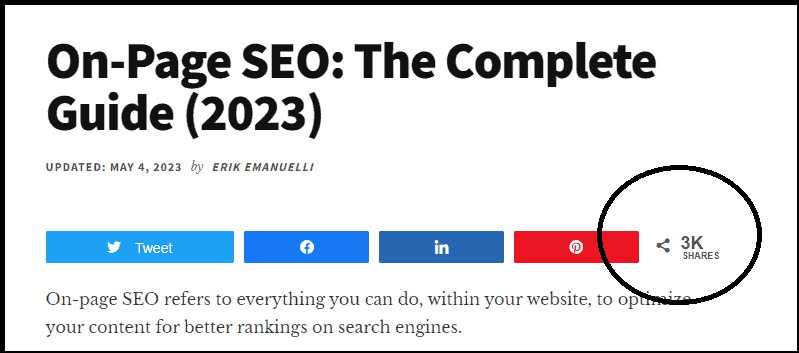
Submit It to Communities
One of the biggest online communities is Reddit.
With the recent Google update, it has gained even more online visibility.
Can you imagine?
550 million organic traffic!
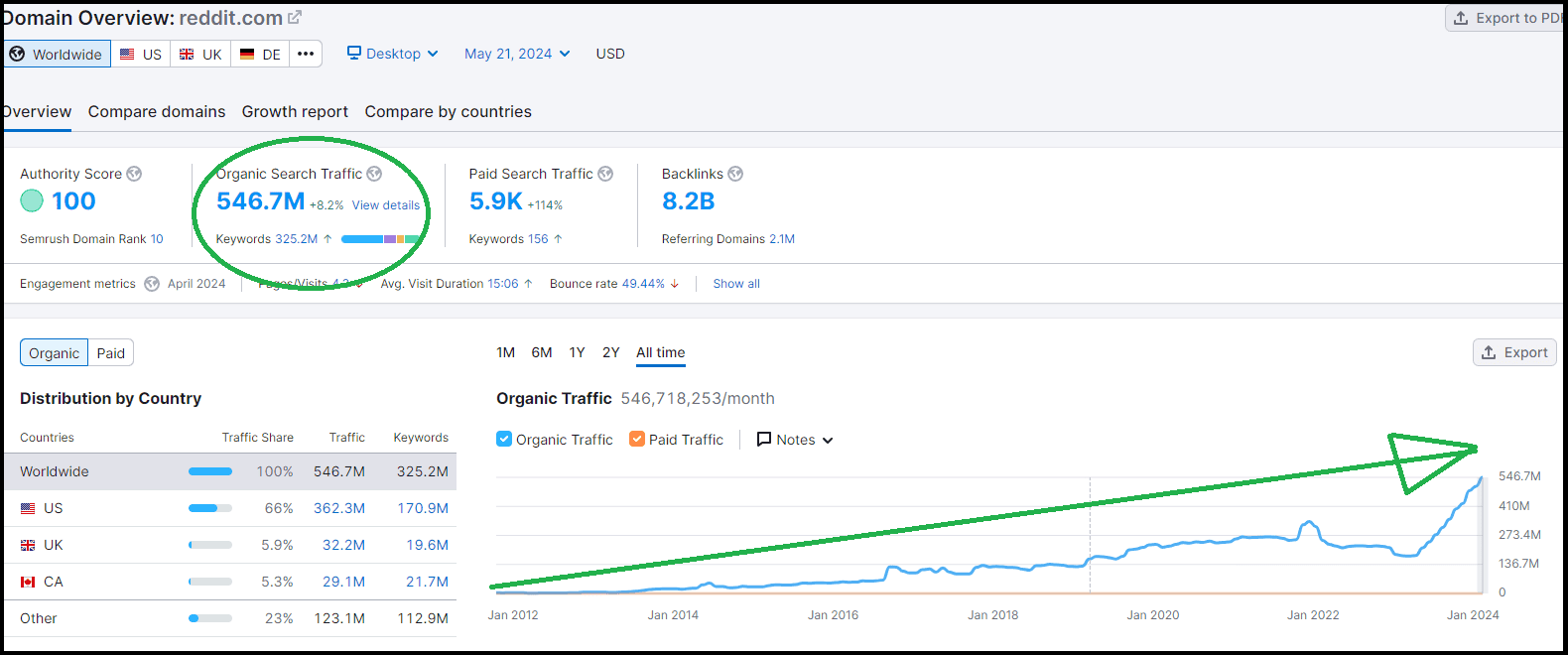
So, what can you do?

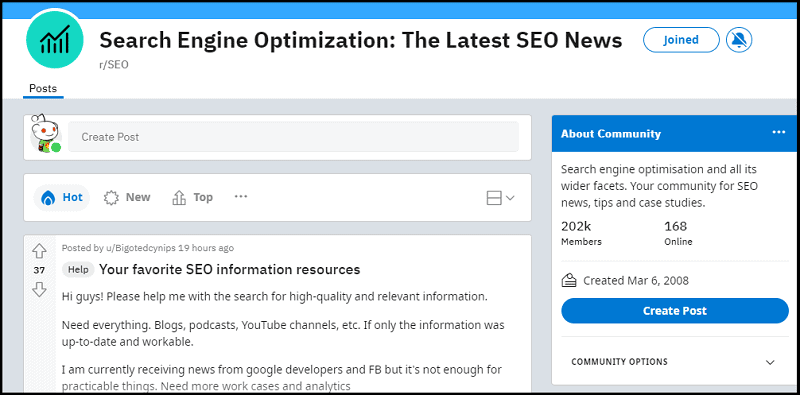
Promote It through Email Marketing
Finally, you can promote your refreshed content through email marketing.
This is a great way to reach your existing subscribers and get them to read your new writings.
You can also use this strategy to attract new readers to your website.
Measure the Results
Measuring the results will help you to see if your efforts have been successful.
It would help if you look at things like:
- Pageviews
- Social shares
- Inbound links
If you see a positive impact on these metrics, your content refresh was successful. If not, then you may need to adjust your strategy.
You can use Google Analytics, Google Search Console, and your favorite SEO tools.

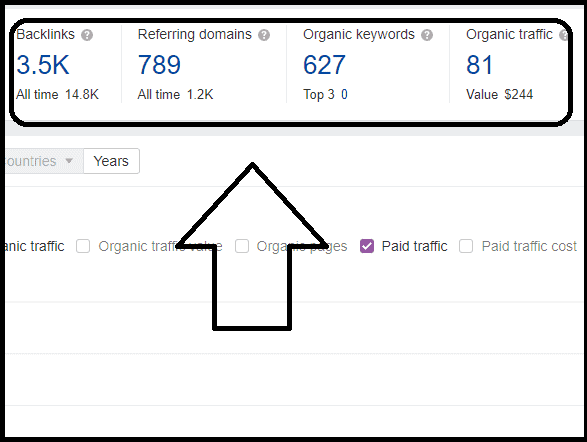
Before You Go
Content refreshing is an important part of online marketing.
But it’s not the only method to get traffic to your site.
Here are some helpful articles you may want to read:
Now, over to you.
Do you have any tips or strategies to add?
Share them in the comments below!

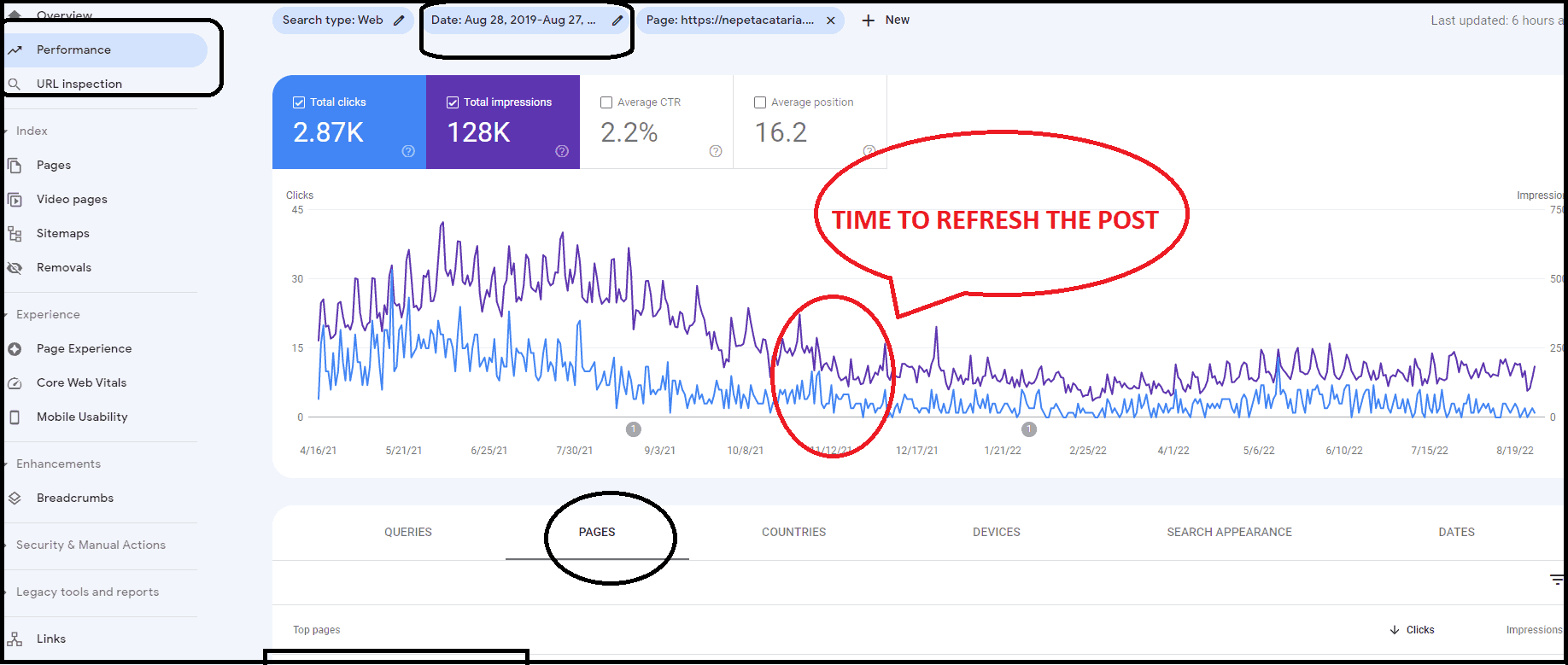
Hey Erik,
I was just writing about content refreshing on an another one of your blog posts on Rich Snippets (By the way, I loved it and shared it on LinkedIn).
I just about started to do this, but this blog post is razor sharp on just how it’s to be done.
I am surprised so many bloggers, brands, and businesses don’t do this at all. Eh?
Ash
Thanks for the positive feedback and the shares, Ash.
Yeah, this is something that most bloggers and businesses miss.
It’s a shame, right?
Content refreshing is something I’ve recently started focusing on. It’s definitely important to give people updated information, and by doing so you can help your site in search results. Updating content is also a great way to see how you’ve grown as a blogger. When I go back into old posts, I sometimes wince at how they appear and how they read! It’s a good feeling to know I’m better at blogging now than I was and to be able to show that through refreshing my posts.
That’s a good feeling, isn’t it, Sabina?
This means your knowledge and experience are increasing, and so is the quality of the content you are delivering to your audience.
Thanks for stopping by and leaving your comment.
Very detailed article and tips Erik!
Content refreshing is a great way to get more traffic to your website without starting from scratch.
I have had some old posts that were my biggest traffic drivers. And since I wasn’t paying a lot of attention to my blog then, I didn’t update them for years, I lost all the traffic 🙁 Refreshing them added good traffic spikes, but I didn’t recover all the traffic.
So it is very important not to wait too long before refreshing. One additional method that worked for me was also changing the date of the post to the date of the update.
Thanks for your positive feedback, Poulomi.
I guess it’s good to double-check all the old posts every year, or so.
Most of all, for certain time-sensitive topics.
I added the “updated” date too, on my blog posts.
You can check it below the title of the articles.
I appreciate the suggestions!
Excellent guide Erik and what an important message. Refreshing what you already have not only gives you a Google traffic boost, but also helps you to use your time effectively. Creating new content rocks but it also helps to keep republishing what you have, updating posts with hundreds of words and being timely as well.
Ryan
Everything should be made for your audience.
Anything that can enhance user experience is something webmasters should spend time and effort on.
Thanks for the positive feedback, Ryan.
Hi Erik, I’ve seen updating old content as a great way to drive more traffic to old posts that needed updated information. I have a lot of them on my site with social media as it changes so often. Thanks for the tips on how to do it right with SEO in mind.
Hi Lisa,
good to hear that you are getting nice results with content refreshing.
It’s particularly important for a specific niche like your blog about social media.
Thanks for sharing your experience here.
Hi Erik,
I am a firm believer in refreshing or repurposing content. It saves a lot of time and helps us to keep our content updated.
Thanks for the insights.
Hi Julie,
that’s indeed an important part of the process for content creators and bloggers.
Thanks for sharing your views here.